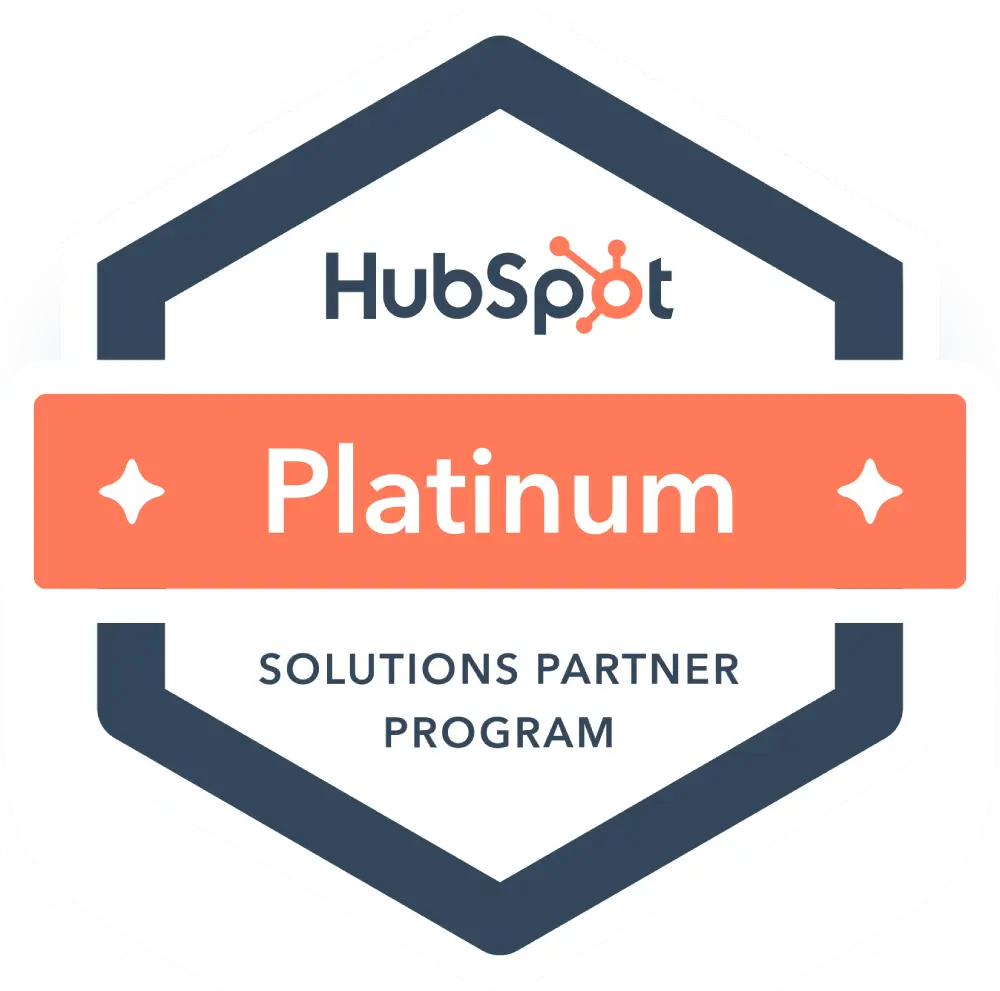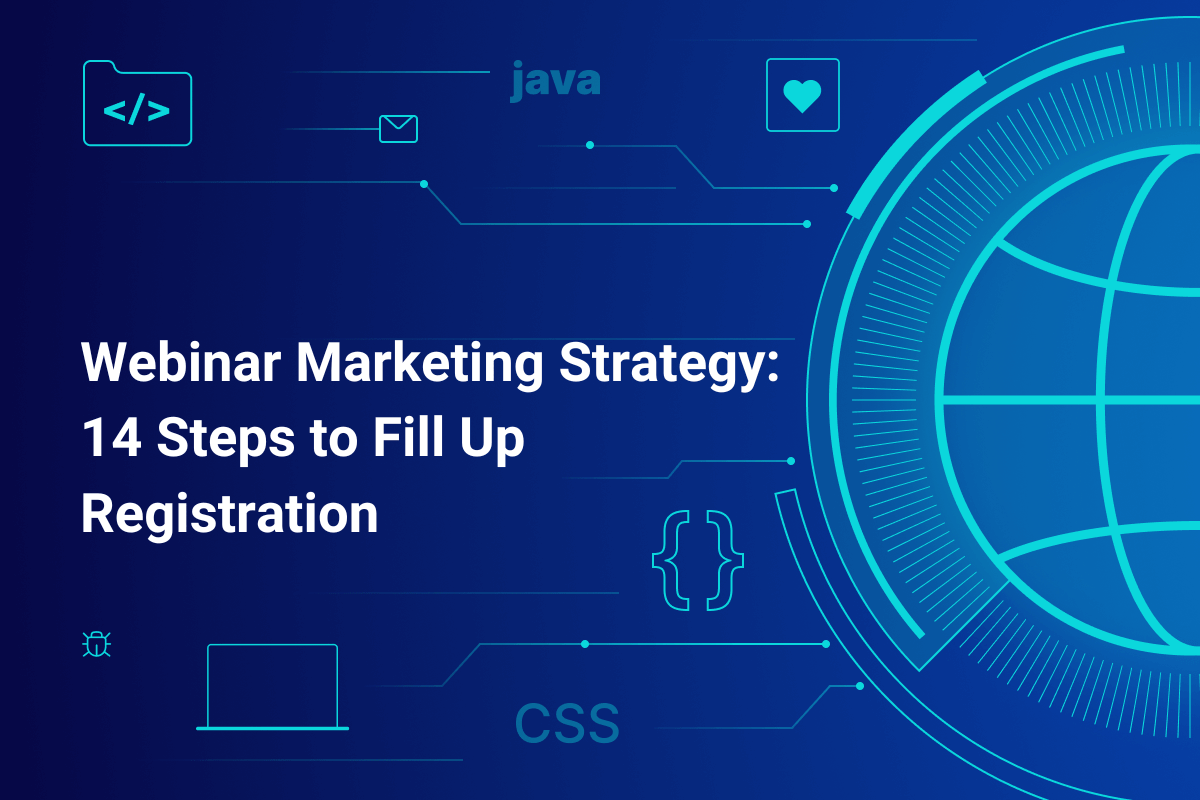A surprising B2B marketing strategy that’s not just surviving, but thriving today is an ‘old’ favorite—webinar marketing. Why? Because webinars offer a unique blend of education, engagement, and direct communication, all from the comfort of your screen of choice. They’re a powerful tool for marketers looking to share insights, spark conversations, and generate those precious leads.
73% of B2B marketers and sales leaders say webinars are the number one way to generate high-quality leads. This nugget of information is a wake-up call to webinars’ potential in your marketing mix. They’re about reaching out, engaging an audience, and turning that engagement into tangible results.
However, mastering webinars is more than understanding technology or being a subject matter expert. It’s crafting a strategy that fills up registration, sparks interest, and converts that interest into action.
Webinar Marketing: What is it, and why is it important?
A webinar is a video seminar held online, enabling attendees to join from wherever they can connect to the internet. Through live interactions, real-time Q&A, and engaging presentations, webinars create a space for genuine dialogue, brand building, and business connections.
Webinar marketing involves strategically creating, promoting, and delivering webinars. You identify the right audience, craft resonant content, and use various channels to boost registrations. The end goal? To educate potential customers, highlight your offerings, and smoothly guide them through the buying journey.
The real game-changer in webinar marketing is its lead generation capability. By offering valuable insights and information, webinars attract an audience already interested in your field. This sets the perfect stage for lead capture through registrations, interactions, and post-webinar follow-ups.
A well-placed offer towards the end of a webinar can significantly amplify your lead gen efforts, turning interested attendees into sales. This strategic approach makes webinars an indispensable part of a comprehensive B2B marketing strategy.

5 Types of B2B Webinars
- Educational Webinars – Essential for B2B marketing, these sessions inform and educate the audience on trends, practices, and topics, building your reputation as an industry expert.
- Product Demonstrations – Showcases your product’s features and benefits, guiding potential customers down the sales funnel.
- Customer Onboarding Webinars – Smoothly introduce new clients to your product or service, enhancing their experience and loyalty.
- Q&A/Panel Discussions – Engage your audience with discussions by industry experts on various topics, offering a dynamic and interactive format.
- Customer Success Webinars – Aimed at existing customers, these webinars teach new features and best practices, supporting customer retention and satisfaction through direct feedback and problem-solving.
Webinar Timing: Promotion, Scheduling, and Ideal Length
When should you begin promoting your webinar?
Typically, three to four weeks of promotion gives your audience enough time to discover and decide to attend your webinar. However, the type of webinar can influence this timeline.
For instance, an in-depth educational webinar on an emerging industry trend might benefit from a longer promotional period to build interest and anticipation. On the other hand, a product demo could be effectively marketed in a shorter time frame due to its straightforward value proposition.
What’s the best day and time to schedule a webinar?
Your best bet is to schedule a webinar mid-week on Tuesday, Wednesday, or Thursday. These days have consistently shown higher attendance rates.
Timing-wise, consider the geographic spread of your audience; late mornings or early afternoons are generally safe bets to accommodate various time zones.
What’s the ideal webinar length?
The ideal duration of your webinar is 30 to 60 minutes. This timeframe strikes a balance between providing valuable content and keeping the audience engaged.
Always gauge the content complexity and audience expectations when deciding your webinar’s length. Longer webinars can delve deeper into complex topics but risk losing the audience’s attention. Shorter sessions may not provide enough depth.
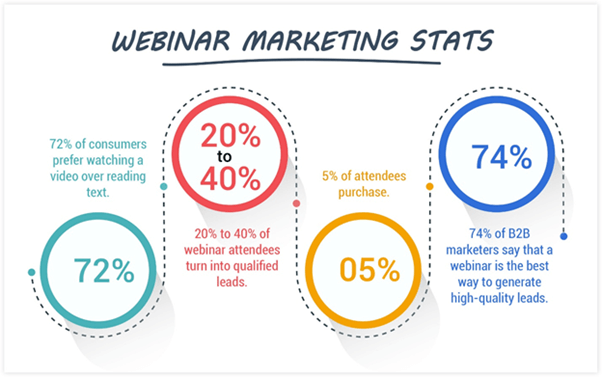
What tools should I use for webinar marketing?
To effectively manage a webinar from start to finish, you’ll need a diverse toolkit that supports each phase of webinar marketing:
For Promotion:
- Email Marketing – Use Marketo, HubSpot, or Mailchimp for targeted campaigns.
- Social Media Management Tools – Oktopost and CoSchedule broaden your reach.
Content Management:
- Content Calendars – Employ Asana or spreadsheets for scheduling.
- Collaboration – Try Slack, Google Docs, or Asana for teamwork.
Hosting:
- Platforms – Host your webinars reliably with Zoom Webinars, GoToWebinar, or Webex.
Post-Event:
- CRM – Use Salesforce or HubSpot for engagement tracking.
- Automation – Deploy follow-up campaigns with HubSpot or Pardot.
- Analytics – Get performance insights from Google Analytics or Tableau.
14 Steps to a Full Registration Webinar
To book your webinar to capacity, follow these steps with actionable tips:
1. Define Your Goals
Before diving into planning, be clear about what you want to achieve with your webinar. Is it lead generation, product education, or building thought leadership? Setting specific goals early on shapes your content, promotion strategy, and success metrics, ensuring your webinar is focused and impactful.
- Start by identifying your primary audience and the action you want them to take post-webinar. This helps you select the appropriate webinar type while guiding all your planning and promotional efforts.
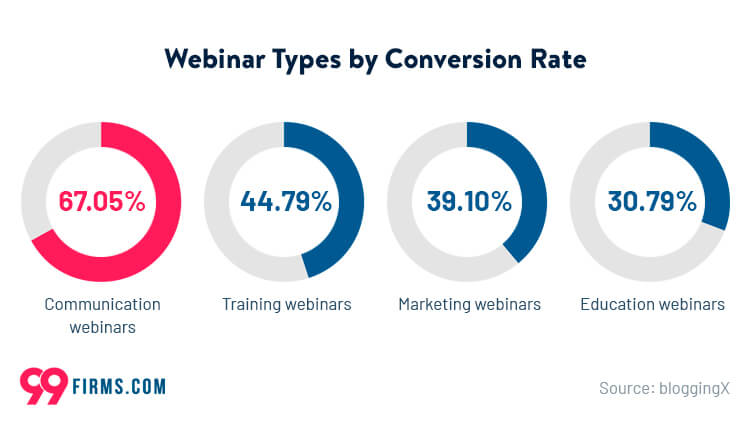
2. Webinar Lead Generation Strategies
Diversifying your lead generation tactics ensures a full registration list. A multi-channel approach maximizes your reach and attracts a wider, more engaged audience.
- Partner Sharing – Collaborate with industry peers for speaker sharing to access wider audiences.
- Digital Collaboration – Partner with publishers and syndication platforms to reach interested but untapped audiences.
- LinkedIn Events – Use LinkedIn to create events and invite and engage your professional network.
- Targeted Campaigns – Employ email campaigns and social media for personalized, audience-specific promotions.
- Influencer Engagement – Include influencers or thought leaders to leverage their reach and credibility.
- Content Integration – Merge webinar promotion with your content strategy and community participation for added engagement.
- On-Demand Sessions – Consider on-demand sessions to extend your webinar’s life as a lead gen tool, allowing scheduling flexibility for your audience.
3. Know Your Audience
Understanding who you’re talking to is crucial. What are your audiences’ demographics, challenges, interests, and industry trends? This insight ensures that your webinar is relevant and engaging to your target attendees.
- Use surveys, social media interactions, and industry reports to gather insights.
- Segment your audience to tailor your webinar content and marketing messages.
4. Choose a Compelling Topic
Your webinar’s success hinges on its topic. Selecting a subject or product that addresses your industry’s current need, trend, or pain point attracts more registrations by promising valuable insights.
- Analyze industry forums, competitor webinars, and customer feedback to identify hot topics.
- Craft a unique angle or solution that your webinar will explore.
5. Create Engaging Content
Crafting content that captivates and retains your audience’s attention is crucial for a successful webinar. It’s essential to tailor your webinar content to different stages of the buyer’s journey to meet your audience where they are.
- Invest in high-quality webinar production and editing to enhance the viewing experience.
- Map out your marketing funnel and identify the key topics or questions at each stage.
- For TOFU content, focus on high-level discussions introducing broad concepts or industry trends.
- In MOFU, showcase case studies or user testimonials that demonstrate the effectiveness of your product or service.
- For BOFU prospects, detailed tutorials or how-to guides demonstrate how to use your product effectively to address needs or problems.
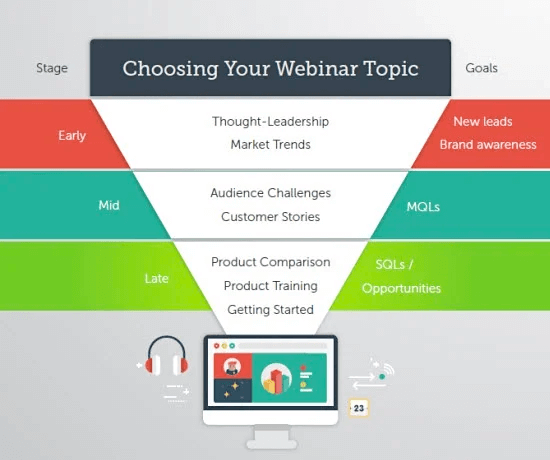
6. Select the Right Platform
The most critical step is selecting reliable webinar hosting with all the needed features. You’ll want to use a dedicated system or a robust alternative like an LMS.
- Choose a webinar platform based on ease of use for presenters and attendees, interaction features (like polls and Q&A), and integration with your marketing tools.
- Conduct a trial run to ensure it meets your needs.
7. Promote Your Webinar
Use your website, email marketing, social media, and partner channels to spread the word. Early and consistent promotion can build anticipation and drive registrations.
- Craft compelling promotional content that highlights the value of attending your webinar.
- Schedule a series of promotions leading up to the event.
8. Create a Landing Page
Designing a dedicated landing page for webinar registration simplifies the process and provides clear information, letting people know exactly what they get when they sign up.
- Include important details, speaker bios, and a simple registration form.
- Optimize for conversions with a CTA.
- Adding high-quality visuals and testimonials to boost credibility and interest.
9. Optimize the Registration Process
Make signing up as easy as possible. A short form asking for basic information can reduce friction and abandon rates. Consider adding a calendar reminder feature upon registration.
- Limit form fields to essential information (name, email, company).
- Ensure the page is mobile-friendly.
- Offer social sign-ins as an option.
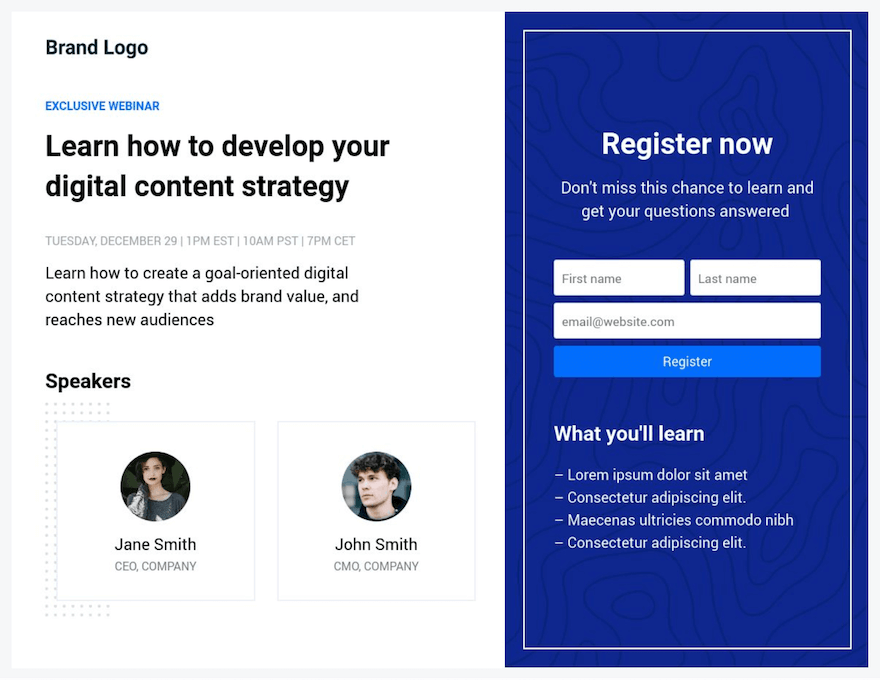
10. Send Reminder Emails
Boost your webinar attendance with reminder emails. A sequence leading up to the event (a week before, a day before, and an hour before) can reduce no-shows and keep engagement high.
- Schedule emails at strategic times.
- Include calendar links to help attendees save the date.
11. Rehearse and Test
Ensure everything runs smoothly by rehearsing your presentation and testing the technology. Familiarize yourself with the platform’s features and have a backup plan for potential glitches.
- Run through the presentation with your speakers and test all technical aspects, including audio and video.
12. Deliver a Stellar Presentation
A dynamic, compelling presentation keeps attendees interested and encourages them to take the desired action. Be professional, and ensure your content delivers on the promises made during promotion.
- Use storytelling techniques.
- Interact with attendees through polls and Q&A.
- Be prepared and bring your ‘A’ game.
13. Follow-Up and Nurture Leads
You completed the webinar—but the work’s not over yet. Engaging attendees post-webinar with follow-up emails and targeted content turns them into leads and customers.
- Post-webinar, send a ‘thank you’ email with a link to the recording and additional resources.
- Segment your attendees based on their engagement and follow up with personalized content or offers.
14. Measure Results and Iterate
Analyzing your webinar’s performance and using the insights for future planning maximizes the ROI of your efforts. Continuously improve your webinar content, promotion, and engagement tactics.
- Track metrics like attendance, engagement, and conversion rates.
- Review feedback to refine your strategy, content, and promotion for next time.
Orchestrate Your Webinar with mvpGrow
Navigating the B2B webinar marketing strategy requires a keen understanding of your goals, audience, and the kind of content that resonates at different stages of the buyer’s journey. The ultimate objective is to craft a webinar experience that draws in your target audience and keeps them engaged, informed, and ready to take the next step with your brand.
As specialists in webinar orchestration, mvpGrow handles the heavy lifting—from brainstorming session ideas to generating leads and managing the event itself, including the nitty-gritty of speaker coordination and outlining the webinar. It’s webinar management designed to propel your business forward with lead generation and sales.
Schedule a free consultation with mvpGrow to discover how we can create a successful webinar marketing strategy for you.

The Founder & Chief Getting Sh%T Done Officer of mvpGrow. After about 8 years as a hired hand some of the largest (and smallest) B2B SaaS companies worldwide I decided to hang up my employee slippers and lace up my growth agency cleats. But just because I’m an agency doesn’t mean we can’t chat (no charge). Please email me on any topic and I will gladly reply: eyal@mvpgrow.com
